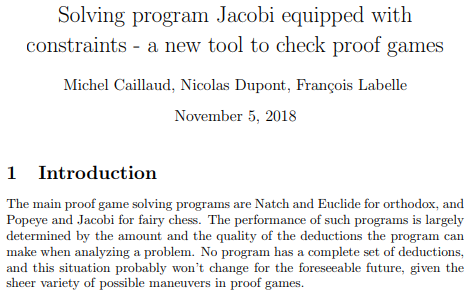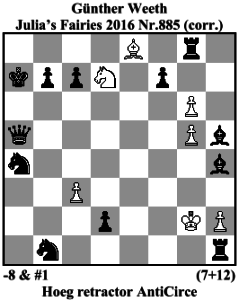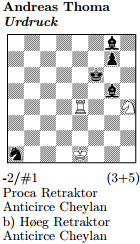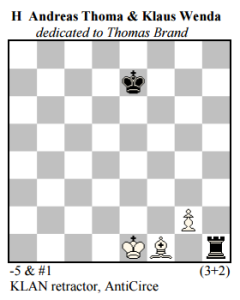 Some important information: This month I’m going to transform JF from bilingual to only English version.
Some important information: This month I’m going to transform JF from bilingual to only English version.
I’m sorry for any inconvenience it might create! But have to tell it was always double work for me making each page twice, although many things remained not translated on Russian pages; plus some functions don’t work well on bilingual sites. → read more..
Still, I’ll be keeping all important pages in Russian, like: on the English version of Articles page I also have links to Russian versions of some translated articles; some other pages will have links on the top to their translation into Russian; the database of fairy pieces and conditions will keep the definitions in English and Russian, and Russian definitions can be seen if you click on a checkbox “+RUS” on the Fairy Terms page; on the top of pages with Original problems published since now I’ll also include the option to see the definitions in Russian; comments to your problems I can publish in several languages, as you send.
Please, remind me if there’s anything else important to keep! Maybe some comments in Russian to previously published original problems? Dear authors, please let me know if you would like me to keep them in English version!
I hope for your understanding! A bit hard to keep managing all my projects… – Julia
Важная информация: В этом месяце я собираюсь перевести JF с билингвального сайта на только английскую версию. Простите за возможные неудобства, которые это может вызвать! Но должна сказать, довольно трудно поддерживать сайт на двух языках, делая каждую страницу дважды, даже если она и не полностью переводится; к тому же некоторые функции на билингвальных сайтах работают не очень хорошо.
В любом случае, я собираюсь сохранить важные страницы, переведенные на русский, например: на английской версии страницы Статей – Articles – я ставлю ссылки на русский перевод для тех статей, где он существует; некоторые другие страницы будут иметь ссылки в верхней части на их перевод; база данных сказочных фигур и условий сохранит определения на обоих языках, и русскую версию определений Вы можете увидеть, отметив чекбокс “+RUS” на странице сказочных терминов – Fairy Terms; в верхней части страниц с оригинальными задачами ( Original problems ), публикуемых с текущего момента, я также добавлю возможность увидеть определения на русском языке; комментарии к задачам можете присылать на любых языках – опубликую все версии!
Пожалуйста, напомните мне, если было еще что-то важное на русском языке, что надо сохранить! Может быть, кто-то хотел бы сохранить комментарии к ранее опубликованным задачам также на русском? Я могу их перенести в английскую версию, просто пришлите мне номера задач! Заранее спасибо! Я надеюсь на Ваше понимание – мне, правда, немножко трудно справляться со всеми своими “общественными работами”, и я ищу возможности экономии времени, где получается, чтобы при этом все же сохранить все свои проекты. – Юлия







 It is happened that after publishing
It is happened that after publishing 